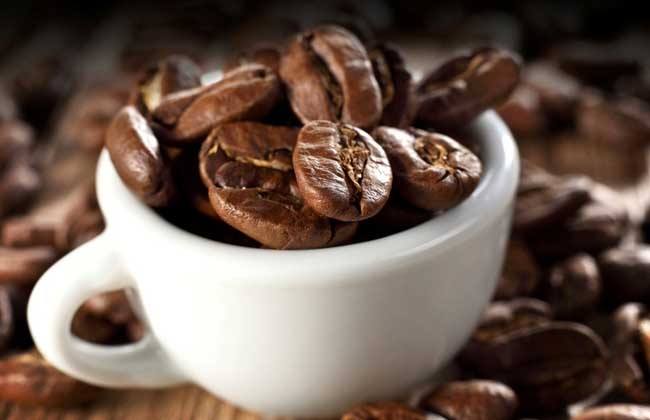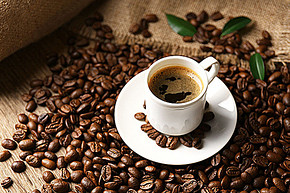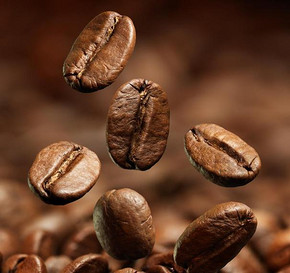Nomenclature, classification and grade of 90 + boutique coffee
Follow the caf é (Wechat official account vdailycom) and found that Beautiful Cafe opened a small shop of its own.
Recently, when I talked to a lot of people about 90 + beans, I found that many people still don't know the nomenclature, classification and grade of 90 +.
If it is not for some knowledge of their products, their official website is completely unable to answer what their products are, how to name them, how to classify them, like a book of heaven.
Joseph Brodsky founded Ninety Plus (90) in 2006, and Joseph began his journey in 2003 and 2004 when Geisha (or Rose Summer) appeared in Panama, but when he didn't find the result he expected in Panama, he had another idea. There may still be some undiscovered varieties among the more than 10, 000 coffee varieties in Ethiopia.

Ninety + CEO Joseph Brodsky
In order to ensure quality, 90+ adopts a cooperative model with local manors, from planting, sampling and harvesting to subsequent processing and cup testing.
90 + exclusive Profile Processing ensures that each coffee bean has a unique and stable flavor trend and quality, while 90% of the coffee is unique in the market like fine red wine.
The nomenclature of 90 + beans is completely different from that of the usual boutique beans.
ProfileProcessing system
NinetyPlus also developed a ProfileProcessing system: for each bean tailored, planting, harvesting, processing and other processes, and through a cup test and correction, exactly let each bean, play its unique fruit flavor. Coffee is classified according to the intensity of fruit flavor, which is different from the traditional classification of Washed, Honey and Natural. It also has three categories: W2, H2 and N2, but different treatments create different levels of fruit flavor, so you may drink sun-treated or water-washed coffee beans in the classification of honey flavor "H2".
The name of 90 + usually starts with the concept of flavor, then the name, and then the choice of producing areas and cooperative farms. It is very different from the general at this point, it is a brand with boutique management style.
First of all, unlike the usual names of producing areas and manors, each bean is named according to its flavor, for example, the famous Nekisse is originally intended to be taken from Shakisso's nectar.
It is not difficult to find that usually beans have the letters N, H or W, such as Ethiopian Yiagacheffe G3 N, which is commonly seen in the market, where N stands for Natural. H = Honey (honey treatment) and W = Washed (washing).
Here, 90 + also has a different view, they think that rather than using the method of treatment to distinguish beans, it should be distinguished by the trend of flavor.
Generally speaking, each treatment of beans will have a more representative flavor, such as:
Sun: unrestrained fruit aroma
Honey treatment: the sweetness is outstanding.
Washing: the flavor is relatively clean
However, 90+ believes that sometimes there will be the same flavor trend under different treatments, for example, the flavor performance of beans in honey may be similar to that of washed beans, so their family has introduced three basic flavor labels of N2, H2 and W2, and the flavor is distinguished by the intensity of fruit aroma and taste:
W2: (Low) low fruit tonality, emphasizing brightness, acidity and floral aroma
H2: (Moderate) moderate fruit tonality, emphasizing sweetness, fruit taste (non-aroma) and tea flavor
N2: (High) strong fruit tonality, emphasizing unrestrained flavor, sweet and sour, jam and dried fruit.
In 2011, in order to improve the stability of raw beans produced in Panama during the drying stage, Joseph developed a solar drying system inspired by a wood drying chamber with the University of Wisconsin in the United States, and named this exclusive treatment Solkiln (SK).
Of course, the beans after this special treatment are very expensive, and because there is very little room for production.
Finally, 90 + beans also have a scoring system that is different from the general 100 points. The main reason is that most beans produced by 90 + should exceed 90 points on cup tests, and their grades are based on three factors: flavor, cost and output.
Level 7: special flavor, meticulous and impressive
Level 12: besides being impressive, it needs to be topical.
Level 21: a rare Level 7 with a flavor that usually surpasses that of Level 7.
Level 39: Level 12 with low yield has a higher flavor than Level 12.
Level 95: at present, the highest grade, from the dried incense to the entrance has a great change and impressive, the output is very rare (so far I have not seen the real thing, super rare ~)
Solkiln: the so-called Solkiln method is a special treatment of 90 + company's patented technology. They dry the fresh coffee fruit in a house originally used to dry wood. In this house, special equipment is used to control the temperature and humidity needed to maintain the stability of the internal environment, while eliminating the impact of the local humid climate on the coffee.
Red: the so-called "red treatment" is a special treatment carried out by the 90 + team through their own patented drying technology, which makes the color of shelled coffee beans show varying degrees of red. This treatment will once again enhance the aromatic characteristics of the coffee itself, and the taste will reflect a strong sweetness with obvious fruit flavor.
Ruby: the so-called "ruby" treatment is also a more difficult and extreme way of dealing with red. So that the red treatment of sweetness and fruit to the extreme, accidentally over will become a bad fermentation taste of the extremely bad areas. This method also requires a lot of manual screening. Every raw bean must meet the "ruby" standard in order to be called a "ruby" bean. It has been eliminated many times, tried many times, and only the last point can meet the standard of "ruby", so it is expensive.
Important Notice :
前街咖啡 FrontStreet Coffee has moved to new addredd:
FrontStreet Coffee Address: 315,Donghua East Road,GuangZhou
Tel:020 38364473
- Prev

Introduction to the legendary background of 90 + Coffee
Following Cafe Review (Wechat official account vdailycom) found that Beautiful Cafe opened a small shop of its own. Ninety + Coffee comes from American boutique coffee creator and supplier: NinetyPlusCoffee. Only a few years after the company was founded in 2006, 90 has made coffee industry around the world aware of their names. The first coffee has been in the coffee industry since 2007.
- Next

What kinds of classic coffee are there in 90 + coffee?
Follower Cafe (Wechat official account vdailycom) found that Beautiful Cafe opened a small shop of its own, Ninety Plus, which translates directly to 90 +, or more than 90 points. Friends outside the industry may not understand that a coffee bean of more than 90 points means it is close to perfect for coffee lovers. So we look forward to the opportunity to share it with everyone who knows coffee.
Related
- Detailed explanation of Jadeite planting Land in Panamanian Jadeite Manor introduction to the grading system of Jadeite competitive bidding, Red bid, Green bid and Rose Summer
- Story of Coffee planting in Brenka region of Costa Rica Stonehenge Manor anaerobic heavy honey treatment of flavor mouth
- What's on the barrel of Blue Mountain Coffee beans?
- Can American coffee also pull flowers? How to use hot American style to pull out a good-looking pattern?
- Can you make a cold extract with coffee beans? What is the right proportion for cold-extracted coffee formula?
- Indonesian PWN Gold Mandrine Coffee Origin Features Flavor How to Chong? Mandolin coffee is American.
- A brief introduction to the flavor characteristics of Brazilian yellow bourbon coffee beans
- What is the effect of different water quality on the flavor of cold-extracted coffee? What kind of water is best for brewing coffee?
- Why do you think of Rose Summer whenever you mention Panamanian coffee?
- Introduction to the characteristics of authentic blue mountain coffee bean producing areas? What is the CIB Coffee Authority in Jamaica?

